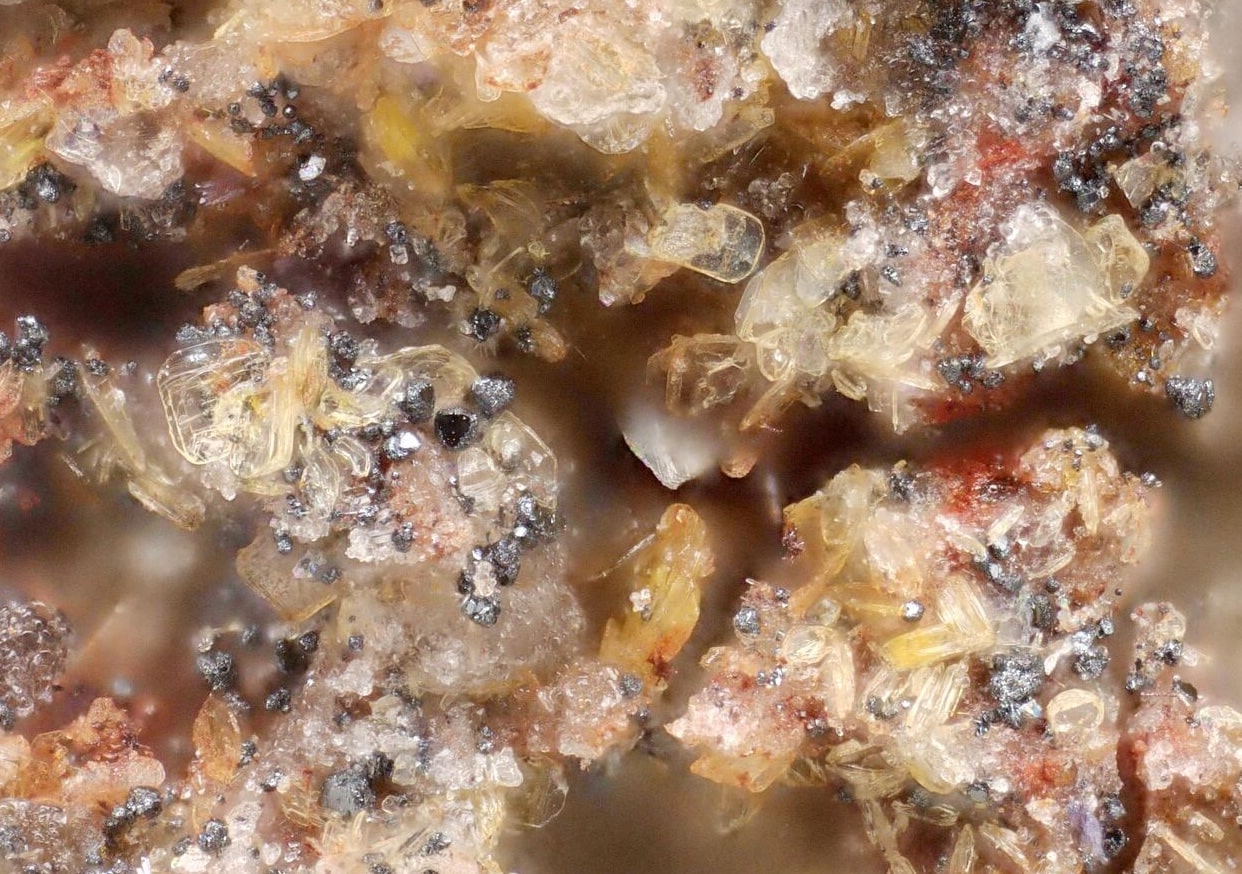
Cuprospinel is a fascinating mineral that often flies under the radar. But what exactly is it? Cuprospinel is a type of spinel that contains copper, giving it unique properties and a distinct appearance. Found in various parts of the world, this mineral is not just a pretty face; it has practical uses too. From its vibrant colors to its role in industrial applications, cuprospinel offers a lot to explore. Whether you're a geology enthusiast or just curious about minerals, understanding cuprospinel can be both educational and exciting. Ready to dive into 30 intriguing facts about this captivating mineral? Let's get started!
Key Takeaways:
- Cuprospinel is a unique mineral that combines copper and spinel, resulting in vibrant colors and high durability. It has practical uses in ceramics, electronics, and environmental cleanup, making it a valuable resource.
- With its fascinating properties and rich history, cuprospinel is not just a pretty mineral for jewelry; it has been used in ancient artifacts and continues to be studied for potential new applications. Its magnetic properties and colorful appearance make it a popular choice for collectors and gem enthusiasts.
What is Cuprospinel?
Cuprospinel is a fascinating mineral that combines copper and spinel. This unique combination results in a variety of intriguing properties and uses. Let's dive into some interesting facts about this mineral.
- Cuprospinel is a type of spinel that contains copper as a significant component.
- Spinel minerals are known for their hardness and vibrant colors, making them popular in jewelry.
- Cuprospinel's color can range from deep blue to green, depending on the copper content.
- The name "cuprospinel" is derived from the Latin word "cuprum," meaning copper, and "spinel," a group of minerals.
- Cuprospinel crystals often form in octahedral shapes, which are eight-sided figures.
Formation and Occurrence
Cuprospinel forms under specific geological conditions. Understanding where and how it forms can give us insights into its unique properties.
- Cuprospinel forms in high-temperature environments, often in contact metamorphic zones.
- It is commonly found in copper-rich areas, where copper minerals are abundant.
- Cuprospinel can be associated with other minerals like magnetite, hematite, and chalcopyrite.
- Major deposits of cuprospinel have been found in countries like Russia, Canada, and the United States.
- The mineral can also occur in hydrothermal veins, where hot, mineral-rich water deposits it.
Physical Properties
The physical properties of cuprospinel make it a unique and valuable mineral. These properties are often what make it stand out in various applications.
- Cuprospinel has a hardness of 7.5 to 8 on the Mohs scale, making it quite durable.
- Its specific gravity ranges from 3.5 to 4.1, indicating its density.
- The mineral exhibits a vitreous to sub-metallic luster, giving it a shiny appearance.
- Cuprospinel is opaque to translucent, depending on the quality of the specimen.
- It has a cubic crystal system, which contributes to its symmetrical shape.
Chemical Composition
The chemical makeup of cuprospinel is what gives it its unique properties. Let's explore the elements that make up this mineral.
- Cuprospinel's formula is CuFe2O4, indicating it contains copper, iron, and oxygen.
- The copper content in cuprospinel can vary, affecting its color and other properties.
- Iron in cuprospinel can exist in different oxidation states, influencing its magnetic properties.
- Trace elements like zinc, magnesium, and aluminum can also be present in cuprospinel.
- The mineral can undergo changes in composition due to environmental factors like temperature and pressure.
Uses and Applications
Cuprospinel is not just a pretty mineral; it has practical uses in various industries. Let's look at some of its applications.
- Cuprospinel is used as a pigment in ceramics and glass, giving them a unique color.
- The mineral is also used in the production of refractory materials, which can withstand high temperatures.
- In the electronics industry, cuprospinel is used in the manufacturing of magnetic materials.
- It can serve as a catalyst in chemical reactions, speeding up processes without being consumed.
- Cuprospinel's hardness makes it suitable for use in abrasive materials.
Interesting Facts
Here are some additional intriguing facts about cuprospinel that highlight its uniqueness and importance.
- Cuprospinel can exhibit magnetic properties due to the presence of iron.
- The mineral has been studied for its potential use in environmental cleanup, particularly in removing heavy metals from water.
- Cuprospinel's vibrant colors make it a popular choice for collectors and gem enthusiasts.
- It has been used in ancient artifacts, indicating its long history of human use.
- Research on cuprospinel continues to uncover new potential applications and properties.
Final Thoughts on Cuprospinel
Cuprospinel, a fascinating mineral, offers a wealth of intriguing facts. Its unique composition and crystal structure make it a subject of interest for both scientists and gem enthusiasts. Found in various locations around the world, cuprospinel's vibrant colors and rare properties set it apart from other minerals. Whether you're a geology buff or just curious about the natural world, learning about cuprospinel can be both educational and enjoyable.
Understanding cuprospinel's formation and uses provides insight into the broader field of mineralogy. Its role in industrial applications and scientific research highlights its importance beyond just being a pretty stone. So next time you come across a piece of cuprospinel, you'll know there's more to it than meets the eye. Keep exploring and stay curious about the wonders of our planet.
Frequently Asked Questions
Was this page helpful?
Our commitment to delivering trustworthy and engaging content is at the heart of what we do. Each fact on our site is contributed by real users like you, bringing a wealth of diverse insights and information. To ensure the highest standards of accuracy and reliability, our dedicated editors meticulously review each submission. This process guarantees that the facts we share are not only fascinating but also credible. Trust in our commitment to quality and authenticity as you explore and learn with us.
